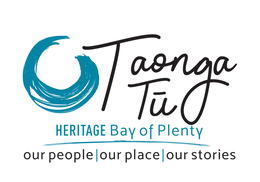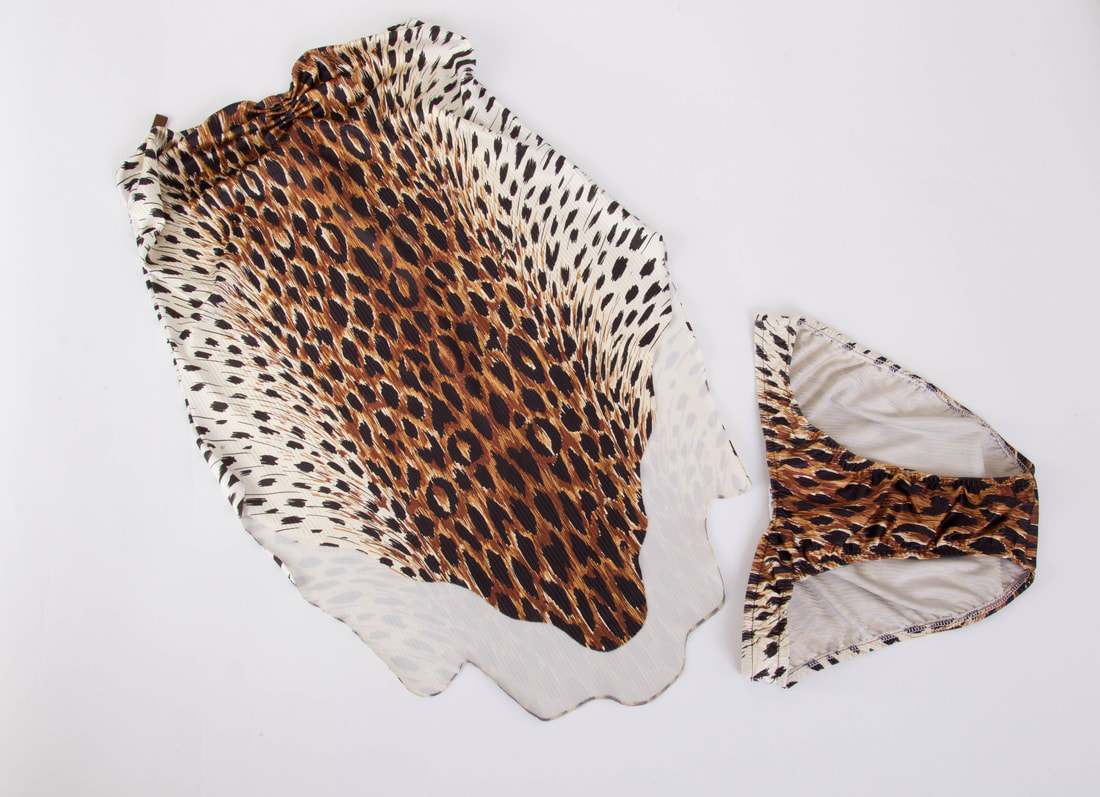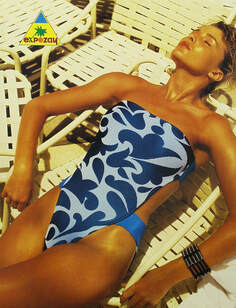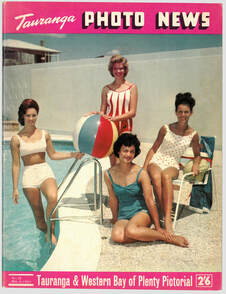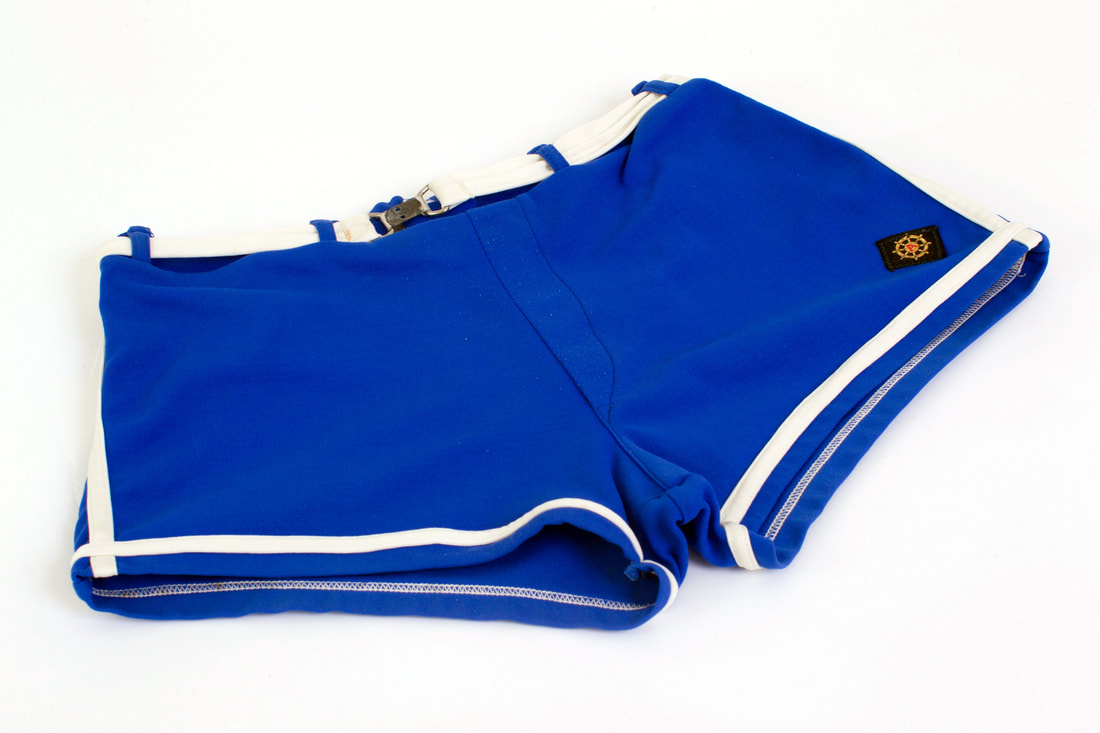'Titiro whakamuri, kōkiri whakamura'
'When you understand the past, you know your future'
'When you understand the past, you know your future'
Contribution from Tauranga Heritage Collection
Adapted from: ‘Looking at the Peaches’
an exhibition developed by the Tauranga Heritage Collection.
Fiona Kean, Tauranga Heritage Collection
an exhibition developed by the Tauranga Heritage Collection.
Fiona Kean, Tauranga Heritage Collection
Every summer locals and visitors alike flock to the Bay of Plenty coastline to swim, surf and enjoy long warm days. While Maori swam, flew kites, and surfed using wooden planks and small canoes, Pakeha have only been enjoying beach life, as we know it, for the last 120 years. Except for the occasional male taking a scandalous skinny-dip, nineteenth century immigrants were slow to get in the sea. The fashion of picnicking at the beach gained popularity in the 1870s and local residents followed the trend. Full days of exploration were spent on Mount beaches and were regularly described in The Bay of Plenty Times;
‘Notwithstanding other attractions elsewhere, Mount Maunganui was well patronised by different picnic parties on Boxing Day. A stroll around the Mount and on the ocean beach amused the pleasure-seekers … It is evident that this spot is destined to be a great accessory to Tauranga.’ 31 December 1885
By the 1920s and 1930s trips to the beach offered more than just beachcombing and a tasty picnic basket. Surfboards, portable wind-up gramophones and the advent of commercial activities like donkey rides, strengthened the beach as a favourite recreational destination. As noted in the Tauranga Borough Jubilee Booklet, published in 1932, swimwear had moved away from the awkward and voluminous bathing costumes, to revealing more skin and allowing greater flexibility. ‘Modern bathing costumes permit a liberal display of bare skin and those who spend much time at the Mount soon acquire the much-desired amount of sun tan.’
The 1950s and 1960s saw the rise of beach beauty contests and New Zealand’s first outdoor contest was held at Mount Maunganui in 1946. Swimwear fashion increased in importance and was influenced by glamourous movies stars such as Elizabeth Taylor and Marilyn Monroe. Styles were feminine, exaggerating the bust, waist and hips. Newly developed textiles contributed to the streamlined hour-glass effect.
During the 1970s and 1980s extraordinary changes occurred in swimwear. New materials were explored and the trends of crochet bikinis and the insertion of rings to hold swimwear together emerged. In 1976 Expozay was established in Tauranga by Tony and Judy Alvos. The business idea was born when Judy, who was importing swimwear, began experimenting and producing her own garments to sell. Early Expozay bikinis were screen-printed with black outlines and then airbrushed with colour detail. This second process meant that the bikinis were basically hand painted, creating a bespoke finish.
The importance of beach culture to our region has ensured that the Tauranga Heritage Collection has a fantastic swimwear collection. The 75 suits in the collection span more than 100 years of swimwear trends and includes 21 Expozay items. In recent years selected swimsuits have been loaned to several museums including Puke Ariki and the National Maritime Museum as part of the New Zealand Fashion Museum’s exhibition At the Beach.
‘Notwithstanding other attractions elsewhere, Mount Maunganui was well patronised by different picnic parties on Boxing Day. A stroll around the Mount and on the ocean beach amused the pleasure-seekers … It is evident that this spot is destined to be a great accessory to Tauranga.’ 31 December 1885
By the 1920s and 1930s trips to the beach offered more than just beachcombing and a tasty picnic basket. Surfboards, portable wind-up gramophones and the advent of commercial activities like donkey rides, strengthened the beach as a favourite recreational destination. As noted in the Tauranga Borough Jubilee Booklet, published in 1932, swimwear had moved away from the awkward and voluminous bathing costumes, to revealing more skin and allowing greater flexibility. ‘Modern bathing costumes permit a liberal display of bare skin and those who spend much time at the Mount soon acquire the much-desired amount of sun tan.’
The 1950s and 1960s saw the rise of beach beauty contests and New Zealand’s first outdoor contest was held at Mount Maunganui in 1946. Swimwear fashion increased in importance and was influenced by glamourous movies stars such as Elizabeth Taylor and Marilyn Monroe. Styles were feminine, exaggerating the bust, waist and hips. Newly developed textiles contributed to the streamlined hour-glass effect.
During the 1970s and 1980s extraordinary changes occurred in swimwear. New materials were explored and the trends of crochet bikinis and the insertion of rings to hold swimwear together emerged. In 1976 Expozay was established in Tauranga by Tony and Judy Alvos. The business idea was born when Judy, who was importing swimwear, began experimenting and producing her own garments to sell. Early Expozay bikinis were screen-printed with black outlines and then airbrushed with colour detail. This second process meant that the bikinis were basically hand painted, creating a bespoke finish.
The importance of beach culture to our region has ensured that the Tauranga Heritage Collection has a fantastic swimwear collection. The 75 suits in the collection span more than 100 years of swimwear trends and includes 21 Expozay items. In recent years selected swimsuits have been loaned to several museums including Puke Ariki and the National Maritime Museum as part of the New Zealand Fashion Museum’s exhibition At the Beach.
HOME
ABOUT: Our Team | Ōtamataha Pā | Taonga - our treasure | Our brand story
WHATS ON: Exhibitions | Past Events | Videos
DISCOVER: Our Tāngata whenua | Early Tauranga | Waihi Beach | Katikati | Mauao - the legend | The Kaituna | Te Puke | Maketu - magic
OUR HERITAGE: Heritage Collection | Heritage Gallery | Battles of Gate Pā & Te Ranga | The Apology | St George's Gate Pā | The Elms |
Historical Society | Tauranga Jazz Festival History | Maori Proverbs | Heritage Organisations | Archives | The Golden Years
HERITAGE FRIENDS
CONTACT
ABOUT: Our Team | Ōtamataha Pā | Taonga - our treasure | Our brand story
WHATS ON: Exhibitions | Past Events | Videos
DISCOVER: Our Tāngata whenua | Early Tauranga | Waihi Beach | Katikati | Mauao - the legend | The Kaituna | Te Puke | Maketu - magic
OUR HERITAGE: Heritage Collection | Heritage Gallery | Battles of Gate Pā & Te Ranga | The Apology | St George's Gate Pā | The Elms |
Historical Society | Tauranga Jazz Festival History | Maori Proverbs | Heritage Organisations | Archives | The Golden Years
HERITAGE FRIENDS
CONTACT
Content Copyright Organic Living Ltd © 2022
